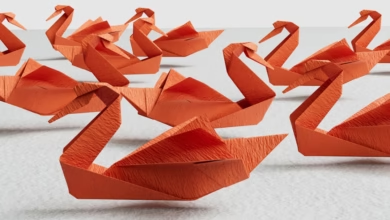Jewelry Metals Explained: The Significance of Gold, Silver, and Platinum in Crafting Sustainable and Valuable Pieces

Jewelry has long been a symbol of beauty, status, and artistry, but the choice of materials plays a pivotal role in crafting these exquisite pieces. In the world of jewelry, metals are not just functional components; they embody the essence of craftsmanship and design. This article delves into the fascinating realm of jewelry metals, focusing on the three most sought-after choices: gold, silver, and platinum. By understanding the differences between precious and non-ferrous metals, we can appreciate their unique properties and contributions to jewelry making. Additionally, we will explore the environmental implications of metal mining and recycling, highlighting the importance of sustainable metal production in today's eco-conscious society. Finally, we will examine the investment potential of these precious metals, shedding light on gold investing, silver investing, and the overall market for metal commodities. Join us as we navigate the intricate world of jewelry metals, where artistry meets metallurgy, and discover how these elements shape the future of jewelry design and investment.
- 1. Understanding Jewelry Metals: The Role of Precious and Non-Ferrous Metals in Craftsmanship
- 2. The Impact of Metal Mining and Recycling on Sustainable Jewelry Production
- 3. Investing in Jewelry Metals: Gold, Silver, and Platinum as Precious Metal Commodities
1. Understanding Jewelry Metals: The Role of Precious and Non-Ferrous Metals in Craftsmanship
Understanding the various types of metals is essential for appreciating the craftsmanship involved in jewelry making. Jewelry metals can be broadly categorized into precious and non-ferrous metals. Precious metals like gold, silver, and platinum are highly sought after for their beauty, rarity, and resistance to corrosion, making them ideal for crafting fine jewelry. These metals not only hold intrinsic value but also play a significant role in gold investing and silver investing, often being considered safe havens during economic uncertainty.
On the other hand, non-ferrous metals such as aluminum, copper, and zinc are commonly used in various applications, including metal fabrication and construction. While they may not have the same status as precious metals, their lightweight nature and durability make them valuable in specific jewelry designs, especially in modern, avant-garde styles. Base metals, including copper and zinc, are often alloyed with precious metals to enhance their properties, creating unique metal alloys that are both functional and aesthetically pleasing.
Metal recycling is another important aspect of sustainability in the jewelry industry. The process of reclaiming precious and non-ferrous metals reduces the need for new metal mining, thereby minimizing environmental impact. As consumers become more conscious of sustainable metal production, the demand for recycled metals is increasing, influencing current metal trends in the market.
In addition to jewelry, these metals find applications in other sectors, including aerospace, automotive, and energy industries. The versatility of metals extends to the use of refractory metals and battery metals, which are critical for various high-performance applications. As technology advances, the incorporation of 3D printing metals into jewelry design is also gaining traction, allowing artisans to create intricate pieces with precision.
Understanding the role of both precious and non-ferrous metals in craftsmanship not only enriches our appreciation for jewelry but also highlights the interconnectedness of various industries reliant on these valuable resources. Whether through traditional craftsmanship or innovative techniques, the world of jewelry metals continues to evolve, reflecting broader trends in metallurgy and sustainable practices.
2. The Impact of Metal Mining and Recycling on Sustainable Jewelry Production
The impact of metal mining and recycling on sustainable jewelry production is significant, as it directly influences both environmental sustainability and the ethical sourcing of precious metals. Metal mining, particularly for gold, silver, and platinum, involves extensive extraction processes that can lead to substantial ecological damage, including deforestation, soil erosion, and water pollution. The mining of ferrous and non-ferrous metals often requires large amounts of energy, leading to a considerable carbon footprint. Furthermore, the extraction of rare earth metals and other base metals for various applications, such as aerospace and automotive, contributes to the depletion of natural resources.
In contrast, metal recycling presents a viable alternative that promotes sustainable metal production. By repurposing precious metals from old jewelry and industrial materials, the jewelry industry can significantly reduce the demand for newly mined metals. Metal recycling not only conserves energy and resources but also minimizes the negative environmental impacts associated with mining operations. For example, recycling gold and silver requires less energy compared to the processes involved in metal fabrication from raw ore. This is an essential consideration for consumers interested in gold investing and silver investing, as recycled metals can serve as a more sustainable and ethical choice.
Moreover, the development of 3D printing metals technology has revolutionized the jewelry sector, allowing for innovative designs while reducing waste. This technology can be applied to various metal alloys, including platinum and palladium, to create intricate pieces without the need for extensive material use. As a result, the industry is witnessing a shift towards sustainable practices that align with current metal trends.
In summary, the choice between mining and recycling precious metals plays a crucial role in the sustainability of jewelry production. By prioritizing metal recycling and supporting sustainable practices, consumers and manufacturers can contribute to a more environmentally friendly jewelry industry that respects both human rights and ecological balance.
3. Investing in Jewelry Metals: Gold, Silver, and Platinum as Precious Metal Commodities
Investing in jewelry metals such as gold, silver, and platinum has gained popularity as these precious metals are not only valued for their beauty but also for their role as commodities in financial markets. Understanding the dynamics of these metals is essential for anyone considering gold investing, silver investing, or diversifying their portfolio with platinum.
Gold is often regarded as a safe-haven asset, particularly during economic uncertainty. Its scarcity, along with its cultural significance and industrial applications, drives its value. Investors frequently turn to gold as a hedge against inflation and currency fluctuations. In recent years, trends in metal mining and the exploration of new sources have indicated a potential for sustainable metal production, which could impact gold's availability and price.
Silver, another popular jewelry metal, serves a dual purpose. It is not only used in crafting exquisite jewelry but also has significant industrial applications, including in electronics and solar panels. The demand for silver in these sectors positions it as a vital player in the base metals market, making silver investing a strategic move for those looking to capitalize on both its aesthetic and industrial value.
Platinum, while less commonly used in jewelry than gold and silver, is highly sought after for its rarity and durability. This precious metal is integral to various industries, including automotive, where it plays a critical role in catalytic converters. As the automotive industry shifts towards electric vehicles, the demand for platinum, along with other precious metals like palladium, may fluctuate, creating investment opportunities.
Investors must also consider the impact of metal recycling on the market. The growing emphasis on sustainable practices has led to an increase in metal recycling efforts, which can influence the supply of these metals. With the rise of 3D printing technologies, metal fabrication processes are evolving, allowing for innovative designs and the potential reduction of waste in jewelry production.
In summary, investing in jewelry metals like gold, silver, and platinum offers a blend of aesthetic appeal and financial advantage. As these precious metals continue to be influenced by industrial demand, sustainable practices, and market trends, they present unique investment opportunities that can enhance a diversified portfolio. Understanding the interplay between these factors is essential for making informed decisions in the ever-changing landscape of metal commodities.
In conclusion, understanding the intricate world of jewelry metals is essential for both consumers and artisans alike. As we explored, the craftsmanship of jewelry relies heavily on the selection of precious metals like gold, silver, and platinum, which not only enhance the aesthetic appeal but also contribute to the value of the pieces. The significance of metal mining and recycling cannot be overstated, as sustainable metal production practices are becoming increasingly vital in our environmentally conscious society. By embracing metal recycling and the responsible sourcing of precious and non-ferrous metals, we can ensure a more sustainable future for the jewelry industry.
Additionally, the investment potential of these metals—especially in the realms of gold investing and silver investing—highlights their status as valuable commodities in the broader market. With trends shifting toward responsible mining and the utilization of advanced technologies like 3D printing metals, the landscape of jewelry making is continuously evolving. As consumers become more informed about metal alloys and their properties, they can make more educated choices when selecting jewelry that aligns with their values and investment goals.
Ultimately, whether you are an enthusiast of jewelry craftsmanship or an investor in metal commodities, staying updated on the latest developments in metallurgy and metal trends will empower you to navigate this fascinating industry with confidence. By appreciating the diverse roles that jewelry metals play—from construction metals to aerospace and battery metals—we can celebrate their beauty, functionality, and the artistry that brings them to life.





